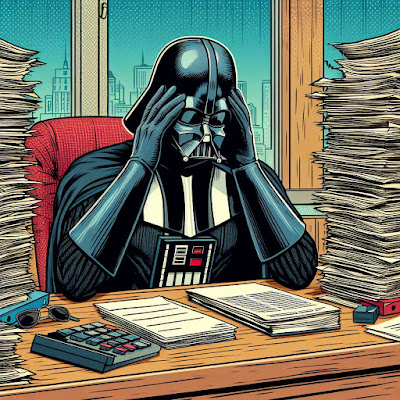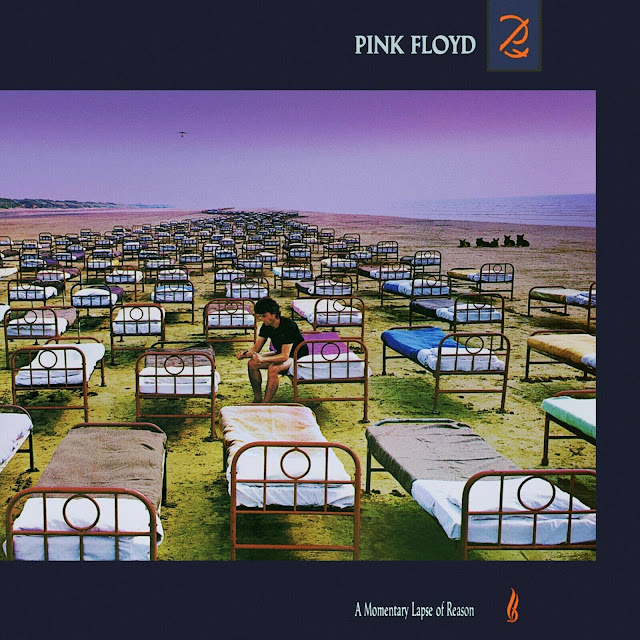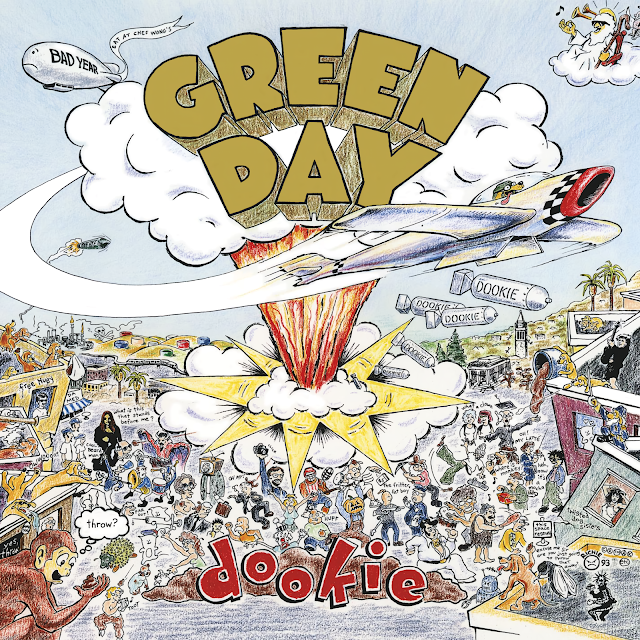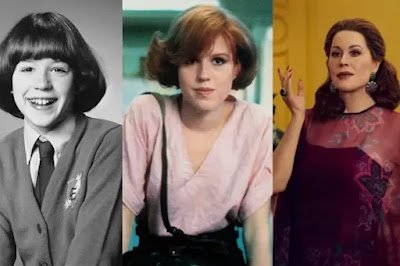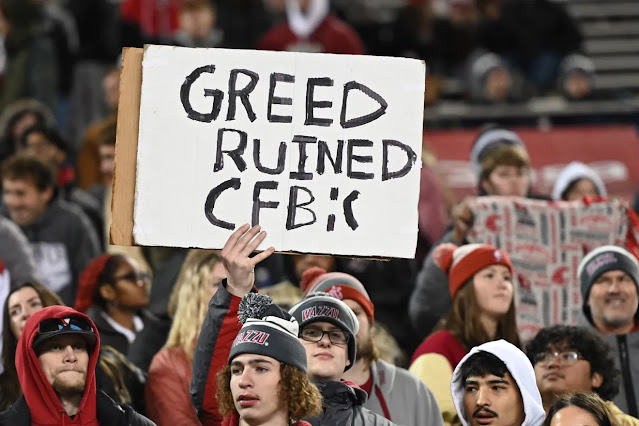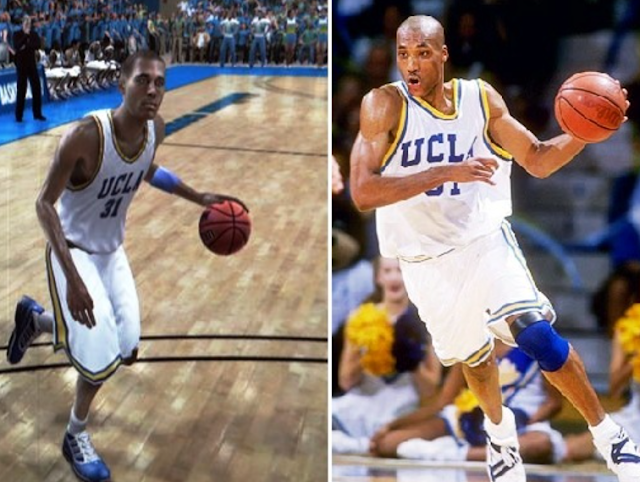December 10, 2024
The 80's Will Never Die #5 (Roxette/Repatha)
September 7, 2024
Michigan Just Got Reminded How Hard it is to Win Football Games WIthout Cheating
I guess it's not so easy when you don't have spies on the other team's sideline. @CoachJim4UM @UMichFootball
Related Posts:
R.I.P. College Football: How Corporate Interests, Greed and Defiance Killed the Game We Loved -- Part II
August 12, 2024
Steph Curry and the Ugliness of a Long Distance Shooter
...Turning to news from the Olympic games, in heroic fashion, Stephen Curry hit five 3-pointers in the final eight minutes of play to secure a win in the gold medal basketball game against France.
Curry, as he often does during his NBA play, then proceeded to skip down the court, pop his jersey and scream at the crowd, all while posing, taunting, and otherwise embodying the stereotype of the "ugly American."
If that wasn’t enough, Steph also treated everyone to his signature (and rather corny) two-hands-on-the-side-of-his-face "Nite-Nite" gesture which was backed up post-game when he donned a t-shirt reading "Nuit Nuit" ("Nite-Nite" in French) and celebrated with cigars and champagne.
All of this underscores the sad truth about Steph Curry: the fact that since he entered the NBA in 2009, he's gone from being the elite-shooting skinny underdog that everyone was rooting for, to an obnoxious, unsportsmanlike, cocky little showboat who enjoys embarrassing his opponents...
#whatajerk
June 28, 2024
Why St. Elmo's Fire Still Matters
In discussing Andrew McCarthy's new documentary about the Brat Pack with a good friend, he began rather aggressively maligning the movie Saint Elmo’s Fire. Over a span of ten minutes, he ranted about how boring the plot was, how Mare Winningham was miscast, (rather randomly) why McCarthy's character in the film is such a "turd", and just how bad a movie St. Elmo's was to begin with when it was first released thirty-nine years ago.
Okay, I admit it; St. Elmo's Fire is not a great film. It wasn’t back in 1985 and it’s not today. But that’s not really the point. Few claim that Saint Elmo's is a masterpiece of filmmaking. In truth, it's not even above average or, by many measures, even particularly entertaining, But it’s by no means a "bad" film either. On the surface, St. Elmo's is a very average drama with no real highs or lows, featuring competent but not exceptional acting and a thin story that falls well short of captivating.
However, what St. Elmo's Fire offers is a take on some very common themes -- friendship, coming of age, secret crushes, finding your place in this world, etc. Certainly all of these themes had been explored on film previously, so St. Elmo's broke no new ground in that way. But what the film undeniably does is offer perspectives through the unique lens of the 1980's -- ultimately presenting keen new examinations of 80's youth by reflecting their psychology, pressures, problems, and world view.
Because Saint Elmo’s Fire applies a unique, extraordinarily contemporary (at the time) 80's filter, it stands out as one of the most emblematic movies of that decade. Think about it -- when you consider the most representative movies of the 1980's, you don’t think of Oscar winners like Platoon, Terms of Endearment, Amadeus or Rain Man. You think of ones that captured the zeitgeist of the time, whether that means films with Cold War overtones (Rocky IV, Top Gun, No Way Out, Rambo), 80's excess (Less Than Zero, Wall Street), a frivolous, fun-loving vibe (Ferris Bueller's Day Off, Footloose, Police Academy), a distinct but somewhat undefinable 80's aesthetic (Flashdance, Lost Boys, Fatal Attraction, Risky Business) or a focus on youth culture (Fast Times at Ridgemont High, Valley Girl, The Breakfast Club -- and its sister movie released the same year, Saint Elmo's Fire.)
Indeed, if you examine the characters and plot of St. Elmo's Fire, you clearly see the social conventions, attitudes, mores and struggles common among 80's youth:
- Billy Hixx (Rob Lowe) is a portrait of hedonism and apathy as he's dragged unwillingly into adulthood.
- Coke sniffing, party girl Jules (Demi Moore) -- with her hot pink, neon apartment decor featuring a floor to ceiling mural of Billy Idol -- is a study in 80's glam and overindulgence.
- Alec Newberry (Judd Nelson) shamelessly pursues promotion in the political world and perfectly captures the Gordon Gekko-esque materialism and aspirations toward upward mobility of 80's yuppies.
- Kevin (Andrew McCarthy) is Alec's antithesis -- cynical, introspective and dismissive of conventional thinking.
- Kirbo (Emilio Estevez) is fancifully pursuing things he only thinks he wants (a law degree and Dale Biberman.)
- And finally, Leslie and Wendy (Ally Sheedy and Mare Winningham) both wonder how they became stuck in lives they never chose -- Leslie as a trophy girlfriend caught in boyfriend Alec's wake and fearing she'll never carve out her own identity, and conflicted Wendy yearning to choose her own path and break away from the life her parents want for her.
June 16, 2024
Streaming Wars: Episode 6
In this latest episode of my ongoing audio blog on the Streaming Wars I examine:
- Dealing with churn
- A shift toward programmed content on streaming channels
- Streamers' plans to push into sports, gaming and betting
- The upfronts: WBD shines, NBCUniversal underwhelms
- Netflix's rationale for no longer reporting subscriber numbers
May 4, 2024
1984's Breakin' Brought Urban & Inner City Art Forms to the Big Screen
I have a tremendous memory when it comes to things pop culture related (hence the name of this blog.) So even though it was 40 years ago (to the day in fact) I still remember what was playing at Loews Wayne Sixplex (the flagship theater located near the Willowbrook Mall in the suburbs of Wayne, NJ) on the first Friday in May of 1984. Firestarter and the Mel Gibson/Anthony Hopkins version of The Bounty alternated showings in one of the big houses; Weekend Pass and My Tutor (the latter on a re-release); Footloose; Moscow on the Hudson; and opening in the other big house was a curious new movie with an unknown cast of black and Latino rappers and street dancers called Breakin’. At the time, breakdancing, b-boys and hip-hop culture was a part of black, inner city culture exclusively. Walls, however, were about to come down and Breakin’ would be the battering ram.
Just about ten years after Herc pretty much invented breakdancing, it and other forms of urban artistic expression finally began entering the American pop culture zeitgeist more broadly. To this point, breakdancing was largely underground and undocumented, gaining perhaps its greatest national attention via the cult film Wild Style and the Los Angeles based dance group The Lockers, who had showcased their talents on shows like Soul Train and Saturday Night Live. Three of the group’s founding members were Fred Berry who, as “Rerun” on the ABC show What’s Happening, would sometimes show off his “pop-locks” and other street dancing moves; choreographer/singer Toni Basil, later known for her hit single “Mickey”, and future star of Breakin’ Shabba-Doo Quinones. But Wild Style and The Lockers were not widely known. What breakdancing needed was a main stream showcase.
Breakin’ earned almost $40 million on a budget of just $1.2 million. The film’s profitability caused studios and film producers to view the breakdancing “fad” (as it was judged in many of their eyes) as a something worth investing in. A sequel was rushed into production and, in almost unprecedented fashion, that follow-up would arrive less than six months later. More significantly, Breakin' helped expose white America to new art forms – ones that, like jazz and blues, had their origins and for a long time were only appreciated in minority communities. Breakdancing, pop-locking, graffiti art, MC-ing, deejaying and rap music would finally open bourgeois eyes – along with movie producers’ wallets.
Breakin’ New Ground
A Quick Word on the Ridiculousness of May the 4th Being Star Wars Day
April 30, 2024
R.I.P. College Football: How Corporate Interests, Greed and Defiance Killed the Game We Loved -- Part II
Below is Part II of an examination of the decades-long series of events, decisions, compromises and money-grabs that led to the end of college football as we know it. I strongly recommend reading Part I before continuing.
Obsession to Crown a Champion
Certainly, the aim of practically every college athletic squad is a championship but for college football that quest required the glorious winning of your bowl game. With the new system, bowl games seemed like they would be getting in the way of the new aim -- chasing an undisputed title and gaining the biggest payday along the way.
- In 2001, Oregon, ranked second in the AP poll, was bypassed for the championship game in favor of Nebraska -- despite Nebraska's 62-36 blowout loss to Colorado in its final regular season game.
- In 2003, three BCS Automatic Qualifying (AQ) conference teams (LSU, Oklahoma and USC) finished the regular season with one loss. Three (Non-AQ) conference teams also finished with one loss (TCU, Boise State and Miami of Ohio) sparking the argument that the BCS was unfair to Non-AQ conference teams. LSU beat Oklahoma in the BCS Championship game and USC beat Michigan in the Rose Bowl and ended up No. 1 in the final AP poll, resulting in yet another split national championship.
- In 2008, Utah was excluded from the BCS championship (despite being the only undefeated Division 1 team) and finished second in the final AP poll behind Florida.
- In 2009, five schools finished the regular season undefeated: Alabama, Texas, Cincinnati, TCU, and Boise State. The BCS formula selected traditional powers Alabama and Texas as the top two teams, which again fueled cries of bias toward the traditional powers.
- In 2010, three teams -- Oregon, Auburn, and TCU -- all finished the year with undefeated records. While TCU statistically led the other two teams in all three major phases of the game (1st in defense, 14th in offense and 13th in special teams) Oregon and Auburn were selected for the national title game.
The tide of public sentiment, pushback, criticism from every direction, and now lawsuits have become too much for the NCAA to navigate and still operate as an effective governing body.
Prior to the NCAA's rule change, very few transfers would have been permissible without the player having to sit out a year. Today these kinds of ridiculous musical chairs scenarios are happening en masse across the NCAA each and every season.
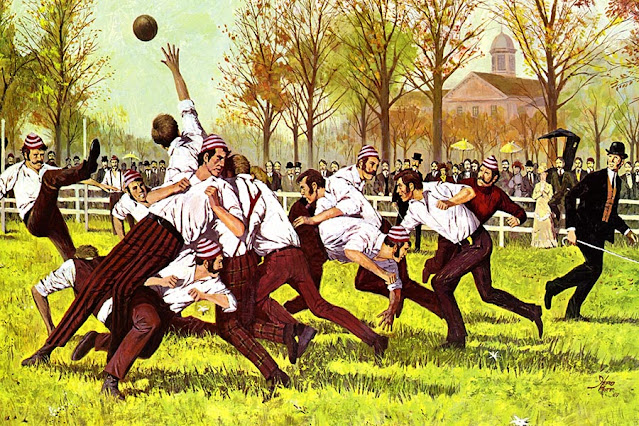 |
| Illustration of the very first college football game -- Princeton vs Rutgers, 1869 |
March 21, 2024
Darth Vader's Lamest Excuses for Being Late for His Meeting with the Emperor
Needed extra time to iron my cape. Can't intimidate the rebel scum with wrinkles you know!
Doctor's appointment. (Not sure if you can tell but I kind of have a breathing problem.)
TIE fighter got stuck in traffic. Who would have thought there'd be rush hour in hyperspace?
Buried in paperwork -- mostly workers comp claims from Death Star explosion.
Got delayed on Tatooine. Turns out, they actually weren't the droids we're looking for.
Lightsaber wasn't working. Went to Target to snag fresh batteries.
Disturbance in the Force upset my stomach. Had to stop at Rite Aid for some Pepto Bismol.
Force-choked another imperial officer and got called in to HR.
Family emergency. Had to reveal my identity to my son and then chop off his hand.
Related Posts:
A Quick Word on the Ridiculousness of May the 4th Being Star Wars Day
Defining Films of the 70's
March 20, 2024
Great Album Covers: A Momentary Lapse of Reason, Superman & Dookie
Pink Floyd's A Momentary Lapse of Reason -- unlike many of the band's greater efforts (The Final Cut, Dark Side of the Moon, The Wall) -- is not a concept album. The cover photo, on the other hand, is highly conceptual, conveying ideas of isolation, loneliness and irrationality. When contemplating prospective cover art, lyrics from the album track "Yet Another Movie" brought images of an empty bed to Pink Floyd guitarist David Gilmour. Gilmour explained his idea to Storm Thorgerson whose design firm was responsible for several notable rock album covers including the aforementioned Dark Side of the Moon, Led Zeppelin's Houses of the Holy and Pieces of Eight by Styx. Thorgerson's final design was a type of installation art that provided a nod to the album's track list and incorporated a soaring hang glider ("Learning to Fly") and several dogs ("Dogs of War") occupying an English beach with not one, but 700 carefully arranged wrought iron Victorian beds. Though shot on a typical gray day, the sky we see has a lovely purplish hue, which gives the photo and this cover a wonderfully serene feel.
Barbra Streisand's nineteenth album would be one of her best-selling. Released in 1977 when she was coming off the success of the chart topping "Evergreen" single and three straight box office hits (The Way We Were, Funny Lady and A Star is Born) Streisand was arguably at the peak of her career and rightly being considered the biggest female talent in entertainment. But on the Superman cover she belies prevailing opinions with a simple, demure pose against a plain blue backdrop. Wearing a white t-shirt emblazoned with the Superman logo, knee socks and white shorts, Streisand is shy but coquettish as she sheepishly cocks her head and tugs down on her shirt. Adorable!
Like Never Mind the Bullocks Here's the Sex Pistols, Green Day's Dookie is more than just a major label debut, it's a pronouncement. Just as the Sex Pistols' album had seventeen years prior, Dookie makes the statement: "We're here; we're kicking the effing doors in and we're changing the face of punk." Unfortunately, despite the fact that their lone album is considered one of the seminal works of its genre, the Sex Pistols didn't last. Green Day, however, is closing in on five decades of punk rock relevancy.
Dookie's cover is everything you'd expect from a punk album -- frenetic, irreverent, iconoclastic. In a jam-packed R. Crumb-like illustration by artist Richie Bucher, we see bombs dropped from a plane, a giant mushroom cloud, the "Bad Year" blimp, funny renderings of Patti Smith, fat Elvis and AC-DC's Angus Young; a satyr, a prospector, a giant talking fly, the woman from the first Black Sabbath album, and tons of dogs hurling their feces.
Apart from all the (often scatological) chaos you'll find, the Dookie cover is also a tribute to Green Day's old stomping ground of East Bay, San Francisco. The setting of the entire illustration is downtown Berkeley and Bucher includes representations of several locals from the East Bay punk scene along and the UC Berkeley Marching band. There's also a shout out to Huey Newton, the former Black Panther leader whose base of operations was just a few miles to the south in Oakland,
This is nowhere close to a full list of all the characters, Easter eggs and inside jokes included on this cover. I bought it when it first came out in 1994 and honestly, I'm still discovering things I hadn't previously.
March 14, 2024
This World Changing Event Took Place Under Cover of the New Millennium...
While exploring the Pop Culture Fiend Archives, I came across the New York Times from Jan 1, 2000 -- which I obviously saved because it was the first 21st century edition of one of the largest newspapers in the country. Upon examination, I noticed that overlooked among the banner headline and all the talk about the new millennium was a story about the surprise resignation of Russian President Boris Yeltsin and the installation of one Vladimir Putin.
Yeltsin resigned due to several factors, including instability in his Cabinet, health issues, a bribery scandal, and cratering popularity among the Russian people due to overall ineffectiveness. Under Putin, Russia has reverted toward its former identity on the world stage as an aggressor, enemy of the U.S., and a major threat to world democracy. Indeed, "President" Putin has become a de facto dictator who, in just a few days, will almost certainly be "elected" to his fifth term thanks to his continuous suppression and outright elimination of any true opposition.
For close to a quarter century now, Putin has created havoc across the globe -- allying with State Sponsor of Terrorism-designated Syria, cozying up with communist China, invading and advancing a war against Ukraine, poisoning and otherwise assassinating multiple political enemies, interfering in the 2016 U.S presidential election, and rigging elections in his own country.
Clearly we all had no idea how thuggish and sinister Putin would be back on 1/1/00 but this issue of the New York Times unknowingly announced the start of it all.
February 29, 2024
FX's Capote vs. The Swans & How Iconic 80's Actresses Diane Lane, Molly Ringwald & Demi Moore Make it Great
One of the most enjoyable things about Murphy's series: seeing the three most iconic actresses of the 1980's sharing the screen for the very first time... we have Diane Lane, Molly Ringwald and Demi Moore who, forty-plus years after their initial fame, crush their roles and once again show us why they became stars.
We are barely halfway through Ryan Murphy's latest offering, Feud: Capote vs. the Swans but we've already been treated to a once in a decade type performance by Tom Hollander who positively disappears into his (title) character role. Hollander perfectly captures Capote's dual nature -- amusing and endearing but also pompous and infuriating --- and also replicates his speech and mannerisms so precisely it's practically spooky. (To be honest, they should just skip the ceremony and give him the Emmy right now.)
That said, the "Swans" referred to in this series are a group of elite socialites (most of them New York-based) who befriended and patronized Capote after he reached fame with his sensationalistic novel In Cold Blood. After years of trusting some of their most guarded secrets to the author, he reveals them in a Esquire article that included excerpts from a new book titled Answered Prayers. The group then proceeded to ostracize Capote, forever banishing him from the high society circle he relished so much. Capote supposedly coined the term "Swans" to describe these women that were, by all appearances, perfectly composed but in reality were carrying tremendous weight and beneath the surface were always paddling furiously to keep themselves afloat.
Often, elements of this story and the reaction of the Swans to Capote's betrayal are difficult to understand. Why would these women -- wealthy, refined and entrenched in the upper crust of society, care so much about Truman? Why are they so devasted when he exposes them this way? And why do they second guess themselves for even a minute about cutting them out of their lives?
It's because Capote's assessment of them was correct. Beneath their veneers of perfection, these women are struggling mightily. They've lost their identities after marrying bankers, European royalty, and other rich and powerful men and now deep down perhaps they're realizing that most of what they've accomplished was only made possible through their family and social connections. Maybe they're awakening to the thought that although they're the envy of many, their lives are largely empty, short of pruning the perfect garden, earning "best dressed" honors, or planning Truman's famous Black and White Ball. Or maybe the betrayal thrust these women into turmoil due to simple embarrassment. For the Swans, appearances (we quickly learn) are paramount. Confronting Truman and making a scene in a swank restaurant they frequent is deemed just as much a sin as the betrayal itself. Likewise, husbands' infidelities are tolerable but the thought of others knowing is not.
It speaks to why Capote was able to fall in with the Swans in the first place. He ingratiates himself with flattery, preying on their superficiality and appearance consciousness, even going so far as to toy with them (and send them into a competitive tizzy) by suggesting he'll be choosing one of them as guest of honor at his ball. In spite of his not so subtle pandering and social climbing, the Swans adopted Truman, introduced him to power brokers, brought him along on lavish vacations, all while sharing their personal doubts and fears. So yes they are clearly victims but not entirely sympathetic due to their own snobbery and pretentiousness. All of this makes them rich, multi-layered characters that any actress (particularly those of a certain age) would love to play.
Which brings me to one of the most enjoyable things about Murphy's series: seeing the three most iconic actresses of the 1980's sharing the screen for the very first time. In addition to Naomi Watts as Babe Paley, wife of CBS head William Paley; Calista Flockhart, as Lee Radziwill, younger sister of Jackie Kennedy, and Chloe Sevigny as fashion icon and author C.Z. Guest, we have Diane Lane, Molly Ringwald and Demi Moore who -- forty-plus years after their initial fame -- crush their roles and once again show us why they became stars.
Diane Lane first grabbed headlines at age fourteen when she starred opposite Sir Laurence Olivier in the 1979 feature A Little Romance. Olivier called her "the next Grace Kelly" and Time magazine put Lane on the cover, proclaiming her one of Hollywood's "whiz kids." This was at a time when print was still a dominant form of media, so for a respected world news magazine like Time to dedicate a cover story to a Hollywood actress (especially one still in her early teens) was practically unprecedented.
Lane next made waves in the cult classic Ladies and Gentlemen, the Fabulous Stains and the more mainstream family pic Six Pack. At the famous casting sessions for Francis Ford Coppola's adaptation of The Outsiders, she beat out a who's who of other young ingenues for the role of the beautiful and conflicted Cherry Valance. The performance earned Lane a Young Artist Award nomination. Coppola was so taken with Lane that he cast her in his next film, Rumble Fish (also based on an S.E. Hinton novel.)
In 1984, Lane took on the role of Ellen Aim, a kidnapped rock star in Walter Hill's vastly underrated Streets of Fire and later that year she scored her first "adult" role as singer/gun moll Vera Cicero in Coppola's brilliant The Cotton Club. Lane was just eighteen during shooting (her co-star Richard Gere was thirty-four) but brought a sultriness to her performance that helped establish her as one of Hollywood's leading screen sirens. (She would go on to star in two other films opposite Gere, the acclaimed Unfaithful -- for which she earned a Best Actress Academy Award nomination -- and Nights of Rodante, adapted from the Nicholas Sparks novel.)
Diane Lane's other 1980's film roles included stripper/femme fatale Lorry in The Cincinnati Kid-esque The Big Town, and lead in the erotic thriller Lady Beware. She closed out the decade with an Emmy nominated performance in 1989's Lonesome Dove miniseries.
Lane has one of the meatiest roles in Feud, portraying Nancy "Slim" Keith, who wed filmmaker Howard Hawks and Broadway producer Leland Hayward before marrying into British royalty. According to some accounts, Slim helped Capote land high powered agent Swifty Lazar and a million dollar book deal. Lane's Slim is resolute in her disdain and quest for revenge after Capote's backstab and Lane's strong performance portrays her as the icy ringleader of Capote's ostracization. As she did with her character in The Cotton Club, Lane plays Slim as calculating, direct and in charge. When it comes to the Swans, she is "the center of the center" -- as Slim describes herself in episode 3. Lane is also fantastic at replicating the high-born accent and affectations of New York's upper crust.
Though she's three years Lane's junior, Molly Ringwald's career path was eerily similar -- from starting out as a child actress, to having a cover story crowning her the new face of young Hollywood, to having her career propelled forward by a genius director. She first gained attention for her lead role in the west coast production of the stage play Annie. In 1979, at just eleven years old, she played Molly in the The Facts of Life but the show was retooled after its first season and the cast drastically reduced. It was a lucky break for Ringwald; she quickly found success in feature films, beginning with 1982's Tempest, for which she earned a Golden Globe nomination. But it would be 1984's Sixteen Candles that would rocket the young actress to fame. Writer-director John Hughes cast Ringwald as the film's protagonist Samantha Baker, a high school sophomore whose sixteenth birthday is forgotten in the chaos surrounding her older sister's wedding. Ringwald was praised for her tender and authentic portrayal and the film helped propel the teen movie genre into its High Renaissance.
Like Coppola did with Diane Lane, Hughes was inspired by Ringwald and cast her in his next project -- the film that would come to define Gen X, The Breakfast Club. Ringwald would become something of a muse for Hughes and she next took on the lead role in the director's follow up, Pretty in Pink. A few weeks after the film's release, Ringwald was on the cover of Life magazine in a special issue that christened her as "Hollywood's Teen Queen". Two months later, her own Time magazine cover story cemented this status.
At this point, Molly was eighteen and ready to take on more mature roles. She turned down Hughes' Some Kind of Wonderful and starred as Cordelia in Jean Luc Godard's avant garde exploration of King Lear; played opposite Robert Downey Jr. in the Warren Beatty-produced The Pick-Up Artist; and finished her 80's run with the comedy For Keeps and the drama Fresh Horses, adapted from the stage play.
In Feud, Ringwald plays Joanna Carson, ex-wife of Johnny, who (like the New York Swans) is taken with Capote's charm, wit and intellect. Carson adopts the discarded Capote and brings him into her circle of elite (this time Hollywood) friends. Ringwald's signature red tresses are colored brunette for this role and at fifty-five years old she naturally no longer possesses her waif-like figure, so it's easy to forget who you're watching. As Carson, Ringwald brings the same effusiveness she did with her Pretty in Pink character Andie and her compassion for Truman is on display in several pathos-rich scenes that portray the man at his lowest.
Demi Moore's road to 1980's stardom was far different than Lane's and Moore's. She wasn't an accomplished child actor and in 1983 -- at the exact same time Lane was shooting scenes with the Academy Award-winning Coppola and Ringwald was about to become the face of the American teenager -- Moore was earning her bones as a recurring character on General Hospital. But in 1984, she starred opposite Michael Caine in the charming but overlooked romantic comedy Blame it On Rio. Though newcomer Michelle Johnson was the breakout star, it was Moore's first major film and she soon began a slow climb to success that would culminate with a run of critical and commercial successes through the 1990's. Ghost, A Few Good Men, Indecemt Proposal, Disclosure and Striptease (the film that made Moore the highest paid actress in Hollywood) were all in her future, along with her own iconic magazine cover, but her rise to fame largely began with the sweet and quirky 1984 teen comedy No Small Affair. The role of Jules in the seminal Gen X coming-of-age drama St. Elmo's Fire followed, as did a relationship with co-star Emilio Estevez and membership in the famous "Brat Pack". Moore then played John Cusack's love interest in One Crazy Summer and re-teamed with her St. Elmo's co-star Rob Lowe in the beloved About Last Night, both released in the summer of 1986.
Her next film, The Seventh Sign (despite being highly anticipated) was a box office flop. Moore then closed her 80's career with the role of Molly -- a prostitute who befriends two escape convicts (Robert DeNiro and Sean Penn) masquerading as priests -- in the much-hyped Christmastime release We're No Angels.
Interestingly, though her box office hit rate was spotty, Moore's career never stalled during the eighties. She married Bruce Willis, who at the time was starring in the ABC hit Moonlighting but with the release of 1988's Die Hard would soon become a full on movie star. He and Moore became Hollywood's "it" couple which helped Demi move solidly onto Hollywood's A-list -- where she basically remained until the 2000's.
In Feud, Moore plays Ann Woodward, a former radio star and showgirl who was married to wealthy banker William Woodward Jr. In what would become one of the biggest stories of its day, Ann killed William after mistaking him for a burglar. Speculation that it was murder ignited after Capote's book preview, which included a character based on Ann who was painted as a gold digger and murderess. In real life, Capote seemed to have personal disdain for Ann and publicly accused her of killing her husband.
Moore gives us a picture of Ann battling depression and straining to maintain her dignity amid the public stares. She displays venomous anger in certain scenes and intense vulnerability in others. At the ball, we see Moore at her best, portraying calm and elegance -- but when Truman calls security to have her ejected we see her shaken, pleading, humiliated. It's a scene where Moore demonstrates swan-like comportment as she calls Truman out for his misdeeds and it's reminiscent of another emotional scene in which Moore displayed similar range -- the break up scene in About Last Night.
For Lane, Ringwald and Moore, streaming shows and other high end television like Murphy's Feud offer strong, female lead roles that come few and far between in feature films. Past the age where they can star in rom-coms, take on "lethal lady" action roles (e..g., Black Widow, Atomic Blonde) or other parts written for younger actresses, fifty-something actresses are these days too often relegated to lesser fare -- guest shots on network shows or if they're lucky perhaps a starring role in their own series (think Tea Leoni in Madame Secretary or Julia Louis-Dreyfus in Veep.) Thankfully, Capote and the Swans shines a spotlight on three of the most talented and beloved mature actresses who by chance came up at almost the exact same time. You literally could not have chosen three women more representative of young Hollywood during the 1980's than these three. In fact, you almost wish Murphy would have made it an all-80's party and given the Watts, Sevigny and Flockhart roles to Elisabeth Shue, Lea Thompson and Winona Ryder instead.
Maybe next time : )
Shout Out to... The Sorels
February 9, 2024
Streaming Wars: Episode 5
- Price increases and regression to ad-supported tiers.
- Max successfully rebrands, cuts costs and wins big at the Emmys.
- Formation of the Streaming Innovative Alliance.
- Is Apple acquiring Disney?
January 9, 2024
R.I.P. College Football: How Corporate Interests, Greed and Defiance Killed the Game We Loved -- Part I
The Michigan Wolverines just defeated the Washington Huskies to win the college football national championship. The victory put a cap on the 2023 college football season but in many ways it also marks the end of 155 years of the country's second oldest organized sport. The events of the last several years, the choices of university officials, rulings by judges, and other factors have finally brought college football to a tipping point where it seems the sport's most defining rules, guidelines and provisions have been compromised (or altogether eliminated) to the point where college football no longer resembles the sport it once was. NCAA football has become the wild west -- complete with rustlers, guns for hire, and more opportunists and villains than it can handle it seems. Here are all the things that slowly killed the college game.
The demise of college football began with the creeping hand of corporate influence and the money grabbing that ensued. Beginning in the early 1990's, the sports world was seduced by the lure of the big dollars of Fortune 500 and other large companies. The 80's had seen Nike, Adidas, Gatorade and other brands strike deals with college and pro-level teams to provide shoes, apparel and more. These, plus endorsement deals with the decade's individual superstars, including Michael Jordan, Wayne Gretzky and Bo Jackson, had proved tremendously lucrative. As the US economy began roaring under the Clinton administration, and the birth of the internet led to the rise of wealthy tech companies like AOL, Yahoo and Cisco, these companies began looking for ways to elevate their brands and increase public awareness. The tens of millions of viewers watching sporting events each week provided the huge audiences they were looking to reach.
From the earliest days of baseball -- America's oldest professional sport -- billboards for beer and cigarette brands were a regular site at ballparks and stadiums. Soon after, play-by-play announcers for baseball, football, basketball and boxing began interrupting their calls to offer a word from the sponsor, whether it was a breakfast cereal, shaving cream, or clothing brand. Later, with the advent of television, games were brought to you by local and national companies in industries including hardware, automobiles, hair care and insurance. But this advertising was always in the background -- fairly innocuous and far from anything one would consider obnoxious. But as time changed, businesses of the new economy wanted a bigger bang for the their buck than billboards or live reads could offer. No longer would companies be satisfied with signage inside the stadium. Instead they sought a much higher profile by acquiring naming rights for the stadiums and arenas where teams played. So it was that by the mid-90's corporate sponsorship in sports reached new heights as American sports stadiums and ballparks quickly sold out (no pun intended.) In 1995, Candlestick Park became 3 Com Park, after the manufacturer of networking equipment. In 1996, the newly opening Pac Bell Park would debut. The following year, Jack Murphy Stadium, home of the NFL's San Diego Chargers became Qualcomm Stadium. We also got Coors Field, Invesco Stadium and several others. From coast to coast, our most famous sports venues were unceremoniously rebranded as big corps shelled out millions to have their names attached to sports franchises.
The Death of the Bowl Games
Around the same time this was taking place, there was also a major disruption in the college bowl system. Bowl games had been played since since 1902 and more were gradually added each decade beginning in the 1930's. By the eighties, the corporate giants (with their footprint now clearly established in the NFL) turned to the college game. Thanks to its new, deep pocketed sponsor, the Sugar Bowl became known officially as the "USF&G Sugar Bowl" in 1988. The next year, the Orange Bowl became the "Fedex Orange Bowl." All of the other bowls followed suit and this soon led to an unwieldy increase in the number of bowl games. To this point, bowl games were events rich in tradition and history. (The Sugar Bowl, for example, has been played since 1935 and came about because Louisiana was once the nation's leading producer of sugar. The game's solid silver trophy was made in London in 1830 during the reign of King George IV and was gifted to the bowl's organizers for the inaugural game.) After corporate sponsorship creeped in, history and tradition were swept aside and bowl names were shamelessly bastardized to afford the sponsor top billing in all press materials and during the TV broadcast.
The final step in this grand sell out was to create all new bowl games -- because after all, more bowls meant more money for everyone. It didn't take long for things to get completely out of hand in this regard evidenced by the fact that several of the newer bowl games have no other name other than that of the sponsor itself. Thus we've seen the likes of the Meineke Car Care Bowl, Little Caesar's Pizza Bowl, GoDaddy.com Bowl, and (God help us) the Pop Tarts Bowl, just to name a few.
Compensation and NIL Concerns
Related Posts:
R.I.P. College Football: How Corporate Interests, Greed and Defiance Killed the Game We Loved -- Part II






